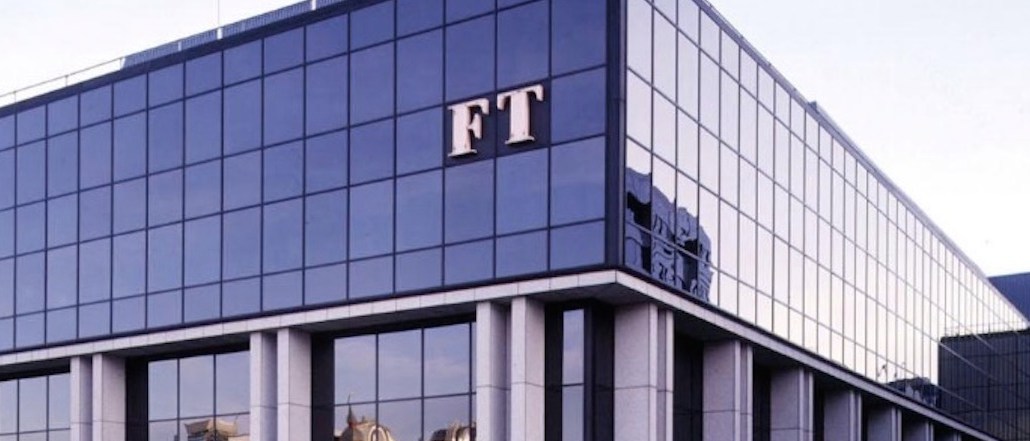Save 50% on a 3-month Digiday+ membership. Ends Dec 5.
How the FT drove digital subscriptions sales by 600 percent over Brexit weekend

Like all massive news with global ramifications, the startling Brexit outcome has caused traffic surges for most quality publishers. But to Financial Times staff, it has led to more than that; it has proved the case for quality news journalism.
The publisher dropped its paywall for all Brexit-related news for 24 hours on the eve of the vote last Thursday and naturally saw a traffic spike. It has experimented with dropping its paywall before — doing so on its 20th anniversary last year. Its motive this time around: to fulfil its journalistic duty of providing undecided voters access to both sides of the debate. Over the weekend, the FT’s Brexit poll tracker was its most-popular-ever piece of journalism, drawing nearly 4 million pageviews.
But people did not simply pillage its content for free and then leave over the weekend. They bought subscriptions.
In fact, the FT saw a 600 percent surge in digital subscriptions sales over the weekend (compared to the average weekend) since the Brexit vote news broke, which equated to “thousands” of additional subscriptions sales.
That rise in subscriptions was no accident, according to the FT’s chief commercial officer Jon Slade, but part of a tactical real-time marketing plan put in place as soon as the news hit.
“This was an FT moment, which comes along now and then. We saw it with the Greece crisis last year and elements of the China crisis, but on Friday morning at about 6:30 a.m., it felt like everything leading up until that point had just been practice,” Slade told Digiday.
When 52 percent of the U.K. population stunned the world by voting to leave the European Union on June 23, the FT synchronized its marketing, audience engagement and customer-acquisition teams — 70 people in total — with its editorial team, in ways it hadn’t previously tried.
“We dialed up our marketing on a real-time basis. We were looking at buying patterns, opportunities in social, and spending our marketing budgets in pretty aggressive ways in an attempt to try and dominate a story. We then made sure that didn’t conflict with the efforts of our audience engagement team, so there was constant dialogue between audience engagement and editorial, and between marketing and acquisition,” said Slade.
To do this teams relied heavily on the analytics systems the FT typically uses in its newsroom, and to power its subscriptions business. The information on what people were reading was then fed back to the marketing team who created messages to promote the articles people were reading most and seeded them on social platforms.
The FT has been experimenting with running free content on social platforms for some time, a strategy which has seen its social traffic rise steadily over the last year.
But over the weekend, traffic to social platforms had its biggest-ever jump: a 500 percent traffic hike to articles the FT ran via social platforms like Facebook’s Instant Articles, Slade said.
That same creative used on social channels was then repurposed for the acquisition marketing teams. Different messages were tested throughout the day, showing different price points and offers for subscription.
Those were then analyzed in “real time” and price points and offers in them adapted to make the most of the opportunity and balance between both volume of new subscribers and the lifetime value we can achieve from them, he added.
Working with its agency, Essence, the FT gave its real-time marketing efforts an extra boost with paid marketing, running programmatic display ads to new customers, and bidding hard against paid search key terms its analytics specified were working. It also ramped up its CRM activity to existing subscribers, with newsletters and emails containing real-time-fed Twitter feeds.
Slade believes one of the reasons why the FT broke all its own traffic records over the weekend is because many people feel they’ve been misled by politicians and some media, in the build up to the referendum, and that’s had detrimental effects on the results.
“Very quickly, there became a clear sense that what people wanted was clarity and journalism they could trust. So rather than just sit back and watch the site traffic rise, we wanted to also bring our business model to bear,” said Slade. “We found the most dynamic way to do that was to get our marketing department to act like a newsroom: what’s happening, what’s our response to it — get stuck in.”
More in Media

How AI’s hit to publisher traffic is quietly rewiring media M&A
Publishers’ AI-driven traffic declines are cooling M&A, stalling deals and lowering valuations. Some analysts are optimistic about 2026.

Digiday+ Research: Where publisher revenue stands with ads, video, content licensing and subscriptions
Digiday+ Research conducted a survey among nearly 40 publisher professionals in Q3. Here is what they had to say about their different revenue sources.

AI-powered professional learning: Inside the launch of Deloitte’s Scout
Deloitte last month launched Scout as part of its Project 120, the company’s $1.4 billion investment in professional development.








